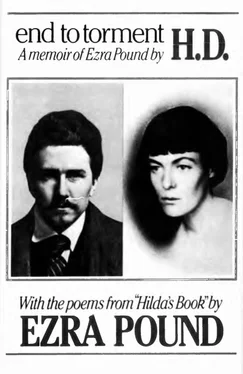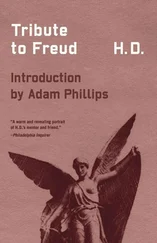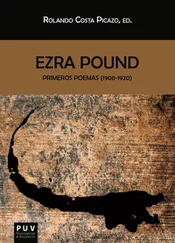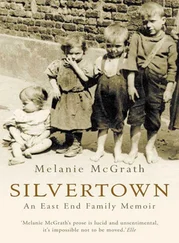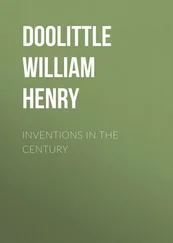April 15
I had letters at one time from a certain Charles [Martell], one of the St. Elizabeth’s circle. He moved later to New Jersey and I had not the heart or energy to continue answering his strange, fascinating letters. Ezra suggested that I send him cards or pictures. I had sent Ezra most of my old Venice cards and some photographs of St. Mark’s mosaics. Charles wrote that Dorothy had sent him a Redouté rose-card (I think it was) that I had sent her. In the last post card that I had from Charles, he spoke of seeing Ezra again. Charles wrote, “He said you were a ‘pink moth.’” It was a line from an early poem. I don’t know where or if it was ever published, “she danced like a pink moth in the shrubbery.” 37
I danced in the garden in the moonlight, like a mad thing. Maenad and bassarid . It is not necessary to understand.
April 16
Erich brought me a beautiful ruby-glass bowl from Venice. It is exactly Pomona, Pomona. “No glass is clearer than are the globes of this flame.” I had not read this pomegranate section to Erich but the small cup-bowl—“no, no, not an ash-tray,” I tell him — exactly materializes these lines. “This fruit has a fire within it.” The small bowl is heavy with a white-blue-silver rim, one feels that it is filled with red wine. It is. “It is the Grail,” I tell Erich.
A letter from Bryher says, “I heard on A[merican]-F[orces]N[etwork] this morning that they had moved to quash the indictment and release Pound …, but it will take a while anyhow.”
April 18, Friday
Joan found me Undine’s little book 38in Zürich, with Ezra’s introduction. The pictures turn on the wheel or turn the Wheel, “Undine, who is the first to show a capacity to manifest in paint, or in la ceramica what is most to be prized in my writing.” This seems a return to the early D. G. Rossetti and the Vita Nuova translation and pre-Raphaelite pictures that Ezra brought me. Concern with “The Blessed Damozel”! Surely, Ezra read it to me — yes — and the “Dante in Verona.” Undine seems myself then . One esteems Ezra’s Gaudier-Brzeska, Wyndham Lewis, Brancusi enthusiasms. But this is something different. A hand (Ezra’s?) holds a tiny ceramica head, in the first picture, called “Testa Invocatrice.” All the heads in this little book are an invocation; there is “Patria” with the “Christo” and the sad “St. Elizabeth’s Madonna.”
April 19, Saturday
Undine seems myself then . I think of her when AFN, last night, at 8, says simply that Ezra Pound, the American poet is to be released. AFN concludes that he will live in Italy. But this is not 1908. Undine is a mature artist. I was 21 when Ezra left and it was some years later that he scratched “H. D. Imagiste,” in London, in the Museum tea room, at the bottom of a typed sheet, now slashed with his creative pencil, “Cut this out, shorten this line.”
H.D. — Hermes — Hermeticism and all the rest of it.
April 20, Sunday
The picture in the Corriere della Sera , Milan, of April 19, that Joan brings me last night, reminds me of William Morris, of Mark Twain. I do not say that the radiofoto looks like either the Englishman or the American, but I am reminded of them. “ Ezra Pound verso La Liberta .” The Ezra of the London period and the Ezra of my early American background are synthesized — as I am. There is also the Italy of his early affiliations, Rossetti and the Dante sequence. There is Dorothy Shakespear Pound “who technically brought the motion for dismissal of the indictment.”
April 22, Tuesday
It was Friday, April 18 that the “indictment” was dropped. I find it very hard to catch up. I have not had time for meditation or day-dreaming and I need this.… It was on Friday, March 7 that I began these notes.
April 23, Wednesday
Now I hear from Norman with the press cuttings. He wants me to send these notes for his secretary to type. “And now another canyon has been bridged by Ezra’s end to torment. … I am glad you are writing it down, and Erich knows how important it is that you should write it down. … It is so good not to be hiding something — anything from those you love and who love you.”
Thinking of Ezra’s work, I recall my long Helen sequence. Perhaps, there was always a challenge in his creative power. Perhaps, even, as I said to Erich, there was unconscious — really unconscious — rivalry. My older brother was my mother’s favorite; I, my father’s. But the mother is the Muse, the Creator, and in my case especially, as my mother’s name was Helen.
It all began with the Greek fragments — and living in seclusion in Lugano and Lausanne (and here, too) I finished, 1952, 1953, 1954, the very long epic sequence, my “cantos,” as Norman called them.
April 24, Thursday
“I’m sorry I said you were hysterical. I was just worried.” I was hysterical. “My only real criticism is that this is not my child.” I could not scream in St. Faith’s nursing home, March 30, 1919. I can not scream now. The train is rumbling nearer. The Child disappears. How did He come? How did He go? This was the summer before I went to America for my 70th birthday. I did not see Ezra and Dorothy. I did not want to see them. Now the “fiery moment,” the whole creative output is centered on those two. He walked out of the gate, was she with him?
He is still there at St. Elizabeth’s. He will stay five days more or so, I read in one of the papers that Norman sent. But, they said, he walked out alone. He took a walk alone. He walked into another dimension, as I do when I write of them. Dorothy is the Bona Dea of classic definition.
April 30, Wednesday
But there are others. Norman writes that Undine is going to Mexico. I look at Ezra’s picture; this is an old man, they say. It is only by admitting that Ezra is an old man that I can say that I am an old woman. But this is not true. There are others. They go on painting pictures or they go on writing poetry.
What now? The curtain falls. I don’t seem to see any further. They walk out, the battered Poet and the Faithful Wife. In my much-quoted “Weekend,” Undine is reported to have said, “Grandpa loves me. It’s because I symbolize the spirit of Love to him, I guess.”
May 1, Thursday
“Grandpa loves me.” That was long ago. There was Is-hilda and the Tristram with the harp, the lyre. Long, long after, there was a new role, but it was the old Round Table. The music was incidental. As in the original legend, Lancelot, the bravest knight, was marred. But he remains the King’s favorite. The Queen is a fortuitous character. But strength is given her. She meets the challenge, in the end. So separated, the characters synthesize, as I have said: Tristram-Odysseus, Lancelot-Achilles, each with the final partner, so balanced that they are almost one. And that having been achieved they retire from actual life; yet in their cloister, their country house or their remote Costello , they are working as toward a final unity.
May 7, Wednesday
Are they? I don’t suppose it matters. Last Sunday’s London Chronicle that George Plank sent me, reports an immediate blustering, “Roosevelt was a fool,” a challenge to reporters who met him on a visit to the Congressman who had been most instrumental in his release, and a broadcast on the BBC, reiterating the old, tiresome, outworn themes, sending his barbaric yap or yawp, like Walt Whitman, “over the roofs of the world.”
This last picture varies in the process of reproduction. This is the photograph I first saw in the April 19 New York Times that Norman sent me, but showing the hand, clasping presumably, a spectacle case. “Testa Invocatrice”? Erich said of the Corriere della Sera , April 19, Milan, print that I had received earlier, that Ezra looked like Wotan. We are back with our Lupus or Lupa, the “Lady Loba.” Our pard or panther, loosed finally from his cage, is still snarling. Would we have it otherwise? Erich bewails with me, however, the pity of it—“They might yet refuse him his passport”—but “this is psychologically inevitable,” he says.
Читать дальше
